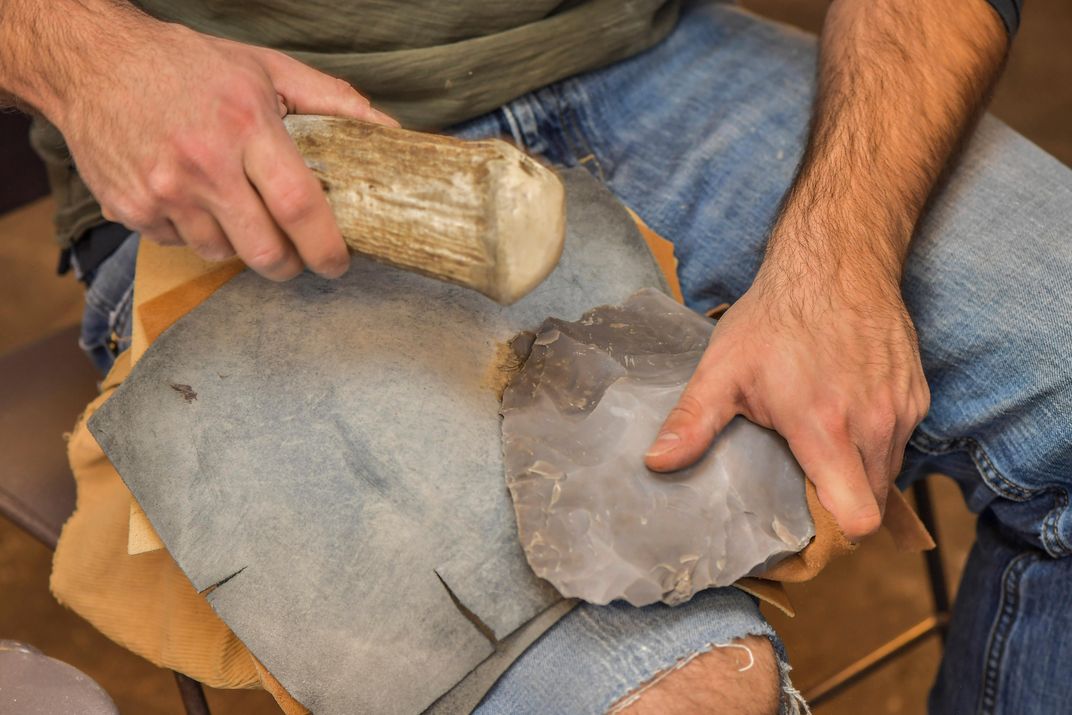This Lab Replicates Weapons to Reveal Stone Age Feats of Engineering
A Kent State archaeologist is testing the innovative engineering of the Clovis people, one of the earliest communities to inhabit North America
/https://tf-cmsv2-smithsonianmag-media.s3.amazonaws.com/filer/e1/ba/e1bac90d-ce94-4167-a833-16ed2e3c3040/eren.jpeg)
The so-called Clovis people, one of the earliest communities to inhabit North America, left behind more than 10,000 arrowheads scattered throughout the continent. Depending on their location, the crafted blades have slightly differing designs, but archaeologists still aren't sure why these differences evolved. Over the last year, however, Kent State University archaeologist Metin Eren has turned his lab into a modern-day weapons workshop to find out. Recently, Eren's experiments helped solve a long simmering mystery about grooves carved in some Clovis points, reports Dake Kang for the Associated Press.
Outwardly, the grooves in the blades appear to serve no functional purpose, leading archaeologists in the past to speculate they were decorative or served some religious purpose, reports Kang. However, by using replicated arrowheads, a mechanical crusher and computer simulations, Eren revealed that the grooves, known as flutes, actually served as shock absorbers. That means the fluted arrowheads were less likely to shatter when striking animals, allowing ancient hunters to save energy by reusing them, explains Jeff St. Clair for WKSU. The innovations helps show how the intrepid early peoples adapted and survived.
“Stone age people 12,000 years ago in Ohio and North America invented shock-absorption technology, and they implemented it in their stone spear points," Eren tells St. Clair, characterizing the arrowhead as the most "bad-ass Stone Age weapon."
In a profile by Kent State, Eren explains that his team, which includes Ph.D. student Michelle Bebber, and British Academy post-doctoral fellow Alastair Key, conduct their experiments in the school's Lowry Hall lab, which includes an experimental room complete with a ballistic setup, a kiln for pottery firing, a pottery wheel, and an industrial floor for stone tool making and butchery.
Since the team can't test out the priceless weapons themselves to see how they work (a practice likely frowned upon by the archaeological community), they have instead turned to the second best option—using the test lab to create replicas of everything. They strive to make the replicas as accurate as possible. For example, they recreate arrowheads using the same techniques the Clovis people would have used, by striking rocks against each other in a method known as flint knapping.

So far, the team has subjected the replica arrowheads to controlled experiments testing speed, weight, velocity and durability in search of clues that might reveal why ancient North American people designed their tools in such ways.
And the lab has no plans of slowing down—back in February, Kent State University reported that they received a Nationa Science Foundation grant, which will give them runway to conduct a three-year collaborative study in partnership with Southern Methodist University and the Univeresity of Tulsa.
“Our goal is to make this the premier archaeology lab in North America,” Eren says in the Kent State profile.